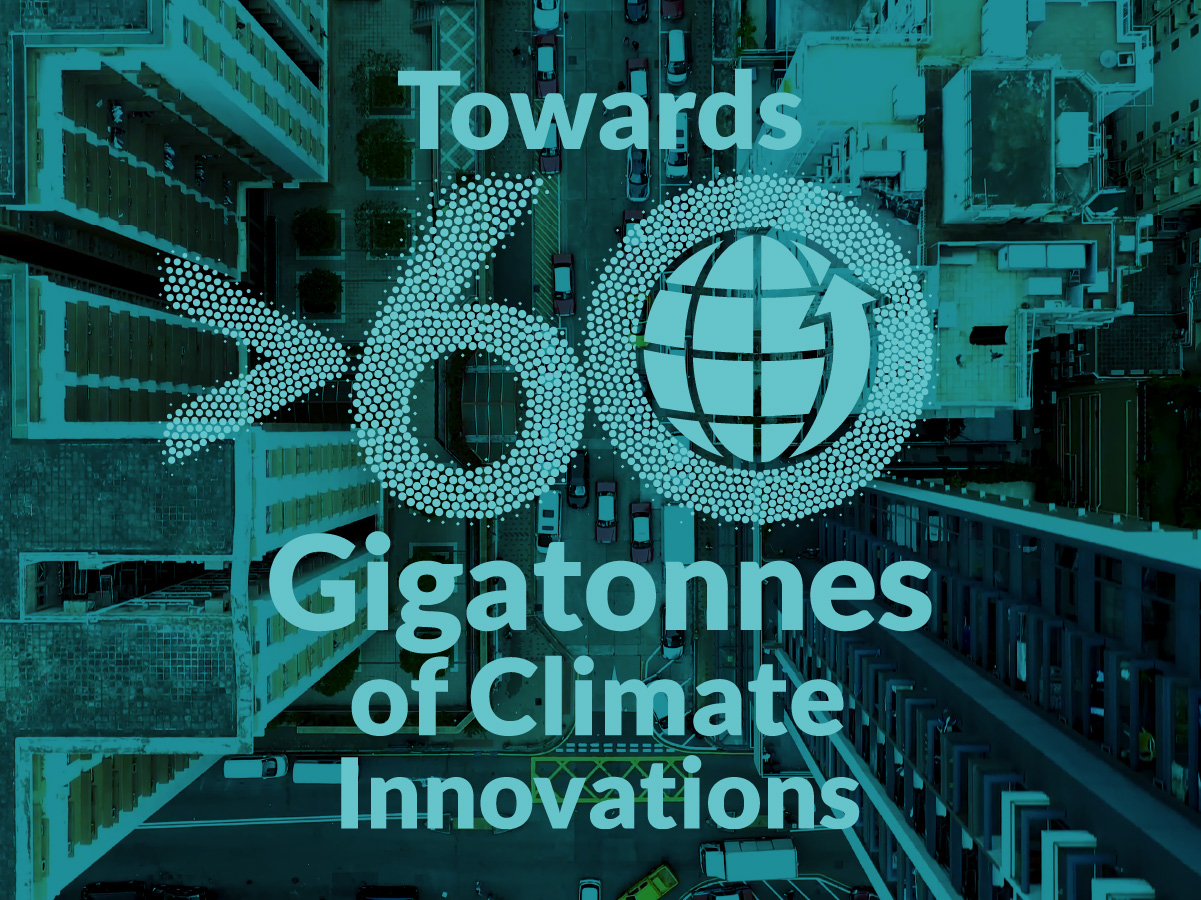Nominated innovations
1000 innovative clean energy solutions and > 150 framework enablers with the potential to deliver more than twelve gigatonnes of avoided emissions by 2030
These assessments are based on a basic avoided emission assessment. The overall concept of avoided emissions is that a solution (product or service) enables the same function to be performed with significantly less GHG emissions. The method of measuring avoided emissions, is to compare a baseline scenario without the enabling solution, with a scenario using the enabling solution; whereby the baseline represents the ‘business as usual’ (BAU) scenario.
These assessments are based on the framework document: The Avoided Emissions Framework (AEF) from September 2020

Business model for hydrogen generation and supply
H2PV is a business program of Phineal, which seeks to develop a business model for generation and supply of hydrogen obtained from photovoltaic energy. The energy production disconnected from the electrical network can be utilized for energy storage, fuel cells and transport systems with internal combustion engines dual and other applications combined with other hydrocarbons. Introduction of hydrogen can enhance their energy properties and emission reduction.
Chile

Phineal
Business model for hydrogen generation and supply
H2PV is a business program of Phineal, which seeks to develop a business model for generation and supply of hydrogen obtained from photovoltaic energy. The energy production disconnected from the electrical network can be utilized for energy storage, fuel cells and transport systems with internal combustion engines dual and other applications combined with other hydrocarbons. Introduction of hydrogen can enhance their energy properties and emission reduction.
Currently unavailable

Solar energy harvesting in Chile's desert
The Atacama Desert, located in northern part of Chile, has special conditions that need the development of technologies to allow an efficient solar energy generation. The area presents an average direct global radiation level of 3.500 kWh/m² per annum and an horizontal global radiation level of 2.500 kWh/m² per annum, one of the highest in the world. The solution is a new optimal solar technology to be used in the Atacama Desert. The development includes new materials to resist high radiation levels, a bifacial photovoltaic panel to take advantage of the radiation and the ground and new methods for operation and maintenance considering the lack of water in the desert.
Chile

AtaMos-TeC
Solar energy harvesting in Chile's desert
The Atacama Desert, located in northern part of Chile, has special conditions that need the development of technologies to allow an efficient solar energy generation. The area presents an average direct global radiation level of 3.500 kWh/m² per annum and an horizontal global radiation level of 2.500 kWh/m² per annum, one of the highest in the world. The solution is a new optimal solar technology to be used in the Atacama Desert. The development includes new materials to resist high radiation levels, a bifacial photovoltaic panel to take advantage of the radiation and the ground and new methods for operation and maintenance considering the lack of water in the desert.
Currently unavailable

Energy generation forcasting
Suncast has developed a range of services for predicting and managing solar-based electricity generation. According to their website, the solution offer accurate models of energy generation by utilizing machine learning and artificial intelligence in combination with local weather data. This service is complemented by a monthly, e-mailed-based report that is sent to each customer, linking anomalies in the power generation to impactful parameters such as weather conditions over the relevant time period. Furthermore, the solutions includes an optimization model that indicates when it is the most profitable for each customer to clean their solar panels.
Chile
≈1

Suncast
Energy generation forcasting
Suncast has developed a range of services for predicting and managing solar-based electricity generation. According to their website, the solution offer accurate models of energy generation by utilizing machine learning and artificial intelligence in combination with local weather data. This service is complemented by a monthly, e-mailed-based report that is sent to each customer, linking anomalies in the power generation to impactful parameters such as weather conditions over the relevant time period. Furthermore, the solutions includes an optimization model that indicates when it is the most profitable for each customer to clean their solar panels.
≈1Mt CO2e/year

Sustainable products from rise hull-based nano materials
Consulting and Energy develops and produces sustainable products based on nanomaterials obtained from the recovery of rice husk waste that would otherwise end up on landfills. The husk is initially used as fuel for energy production in a biomass plant that has an ash yield of 20%, which is the basis for several businesses lines that have been developed by the company: production of solar grade silicon, lithium battery material, aerogels for water irrigation, an enzymatic catalyst and structural insulated panel with an insulation sheet of aggregated rice husk.
Chile
≈10

Consulting and Energy
Sustainable products from rise hull-based nano materials
Consulting and Energy develops and produces sustainable products based on nanomaterials obtained from the recovery of rice husk waste that would otherwise end up on landfills. The husk is initially used as fuel for energy production in a biomass plant that has an ash yield of 20%, which is the basis for several businesses lines that have been developed by the company: production of solar grade silicon, lithium battery material, aerogels for water irrigation, an enzymatic catalyst and structural insulated panel with an insulation sheet of aggregated rice husk.
≈10Mt CO2e/year

Solar-IA: virtual assistant for solar distribution generation
SolarTracker provides a web service that evaluates the performance of solar power generating systems, using an artificial intelligence engine. It provides predictive maintenance intelligence that estimates performance loses and diagnoses causes. The service was designed to help operation managers and owners of solar energy systems including energy service companies, increasing energy production performance by 5%, decreasing maintenance costs by 10% and optimizing human workload by 60%.
Chile

Solar Tracker
Solar-IA: virtual assistant for solar distribution generation
SolarTracker provides a web service that evaluates the performance of solar power generating systems, using an artificial intelligence engine. It provides predictive maintenance intelligence that estimates performance loses and diagnoses causes. The service was designed to help operation managers and owners of solar energy systems including energy service companies, increasing energy production performance by 5%, decreasing maintenance costs by 10% and optimizing human workload by 60%.
Currently unavailable

Fuel saving for vehicles through aerodynamics
Smart Wings provides an aerodynamic solution to help the transport industry lower their fuel consumption by up to 3%. The products work by reducing turbulence generated by the differences in pressure in the vehicle. It also decreases oscillation of the vehicle rear, thus increasing the general driving stability. The company designs, manufacture, install and perform maintenance of their devices, and provides tailored solutions for each customer.
Chile

Smart Wings
Fuel saving for vehicles through aerodynamics
Smart Wings provides an aerodynamic solution to help the transport industry lower their fuel consumption by up to 3%. The products work by reducing turbulence generated by the differences in pressure in the vehicle. It also decreases oscillation of the vehicle rear, thus increasing the general driving stability. The company designs, manufacture, install and perform maintenance of their devices, and provides tailored solutions for each customer.
Currently unavailable

Optimization of indoor environment
NuLight has developed a system for providing improved well-being of people and optimized resource usage by creating an optimal inside environment. This is done using a mix of technologies: Circadian lighting, which simulates sunlight and therefore the natural feeling inside a building, a motion sensor system that senses how different spaces inside a building is used and adapts the environment accordingly. Furthermore, the entire systems performs data collection and analysis to continuously adapt in order to optimize every part of the building.
Chile

Nulight
Optimization of indoor environment
NuLight has developed a system for providing improved well-being of people and optimized resource usage by creating an optimal inside environment. This is done using a mix of technologies: Circadian lighting, which simulates sunlight and therefore the natural feeling inside a building, a motion sensor system that senses how different spaces inside a building is used and adapts the environment accordingly. Furthermore, the entire systems performs data collection and analysis to continuously adapt in order to optimize every part of the building.
Currently unavailable

Early wildfire detection system
ACOT systems is an early bushfire detection system that uses optical and thermal sensors with automated movement that increases surveillance frequency. Each image is analysed with artificial intelligence algorithms to detect signs of fire. Upon finding one, an alert is initiated, indicating the most likely geolocation of the fire to the authorities responsible for controlling and extinguishing it. Detecting wildfires can protect infrastructure or sensitive environments from uncontrolled bushfire outbreaks.
Chile
≈10

ACOT Systems
Early wildfire detection system
ACOT systems is an early bushfire detection system that uses optical and thermal sensors with automated movement that increases surveillance frequency. Each image is analysed with artificial intelligence algorithms to detect signs of fire. Upon finding one, an alert is initiated, indicating the most likely geolocation of the fire to the authorities responsible for controlling and extinguishing it. Detecting wildfires can protect infrastructure or sensitive environments from uncontrolled bushfire outbreaks.
≈10Mt CO2e/year

Castor bio-based aviation fuel
Tianjin Castor Energy has developed the castor bio-based aviation fuel. The technique can produce high bio-aviation fuel yields by hydrodeoxygenation , hydro-cracking and hydro-isomerization reaction, and the properties meet the standards ASTM D7566. Moreover, the products do not contain sulfur, phosphorus and heavy metal. The company claims that the cleanliness and low-temperature fluidity of the bio-aviation fuel are superior to those of petroleum-based aviation fuels. The raw material supply is wildly available making it one of the most cost-efficient bio-based aviation fuels so far.
China
≈10

Tianjin Castor Energy S&T Co., Ltd
Castor bio-based aviation fuel
Tianjin Castor Energy has developed the castor bio-based aviation fuel. The technique can produce high bio-aviation fuel yields by hydrodeoxygenation , hydro-cracking and hydro-isomerization reaction, and the properties meet the standards ASTM D7566. Moreover, the products do not contain sulfur, phosphorus and heavy metal. The company claims that the cleanliness and low-temperature fluidity of the bio-aviation fuel are superior to those of petroleum-based aviation fuels. The raw material supply is wildly available making it one of the most cost-efficient bio-based aviation fuels so far.
≈10Mt CO2e/year

Intelligent heating and cooling for buildings
Henan Runheng Energy Maganement Co., LTD have developed intelligent heating and cooling technology for building by recharging shallow geothermal energy in the same well. The company claims that their technology matches the amount of effluent to backwater and reaches adequate heat exchange between backwater and soil. This greatly improves the efficiency of the heat pump unit. In the full closed cycle, water remains unpolluted. Furthermore, the technology overcomes the defect of water heat pump recharging in multiple wells. It solves the problem of the heat source well blockage and declining water levels.
China

Henan Runheng Energy Management Co., Ltd
Intelligent heating and cooling for buildings
Henan Runheng Energy Maganement Co., LTD have developed intelligent heating and cooling technology for building by recharging shallow geothermal energy in the same well. The company claims that their technology matches the amount of effluent to backwater and reaches adequate heat exchange between backwater and soil. This greatly improves the efficiency of the heat pump unit. In the full closed cycle, water remains unpolluted. Furthermore, the technology overcomes the defect of water heat pump recharging in multiple wells. It solves the problem of the heat source well blockage and declining water levels.
Currently unavailable